In this article you will find many floorball goalkeeper tips to bring your game to the next level. Whether you are a beginning floorball goalie, an experienced goalkeeper, or even a field player, there is much to learn from this article!
In the previous part, I covered the basic posture in the goalie area, the positioning in the goal crease and the ways to improve your skills (also at home!).
READ: Goalie 101 – Why every player should have been goalkeeper at least once
Together with two of the best goalkeepers in the world, Johan Rehn (Falun, Sweden) and Tiltu Siltanen (SB-Pro, Finland), I will answer some of the following questions you submitted in this sequel. The goal of this article is to go deeper into specific parts of goalkeeping and to give you more insight into how top players think. I also want to give tools to improve playing as a goalkeeper, both physically and mentally.
We asked Rehn and Siltanen the following questions:
- What are the shots that are hardest to save as a goalkeeper?
- How to act in 1-on-1 counter situations as a goalkeeper?
- What would be your tips in a penalty shootout?
- How can a goalkeeper help his or her team with the tactical strategy?
In the next part of the article we’ll discuss:
- The mental aspect of goalkeeping
- Goalie tactics
- Off-court practice
Let’s get started!
For this article, I received help from Tiltu Siltanen & Johan Rehn!
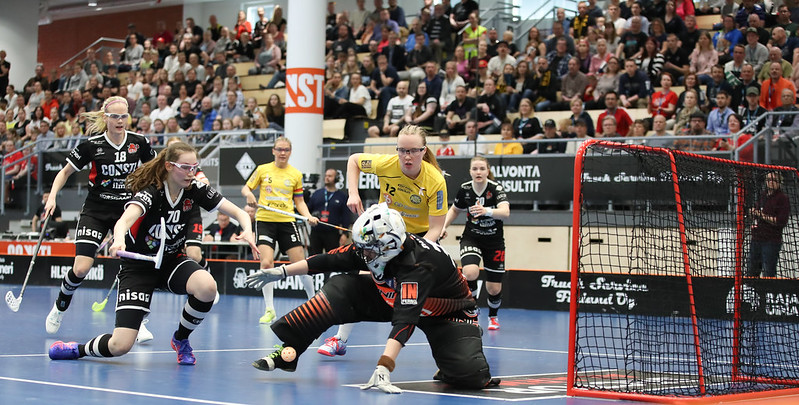
Tiltu is the goalkeeper of the Finnish national team. She has won silver twice, at the WFC 2017 and 2019. On club level she plays at SB-Pro, the team that won in the (discontinued) competition match after match. We have interviewed her before, in preparation for the WFC 2019:
READ – Tiltu Siltanen “The goal is to brighten the silver into gold”
Johan Rehn has been Falun’s goalkeeper since 2008. He’s won the SSL championship five times (including the current season that was aborted due to Covid-19). In 2017, he was ranked 9th in the top 10 of best floorball players in the world. With Sweden, Johan won gold at the WFC 2014 and silver at the WFCs 2016 and 2018. In the last (aborted) SSL season he was at the top of the ranking with Falun – but also in the goalie ranking with a save percentage of 84%.

What type of shot is hardest to save?
“A shot to the low corners, when it goes just over the leg”, replies Tiltu. This is understandable because these are exactly the places where you leave space open as a goalkeeper, the space to the left and right of your torso, viewed from top to bottom between your armpit and your leg.

Johan Rehn finds this question difficult to answer, as it depends on a number of factors. “Traffic is of course a big variable and one that you really can’t affect by yourself,” he says, meaning that there can often be people in the path of the shot that can make you deflect or screen as a goalkeeper (you won’t see the shot coming).
What do you do in a counter when it’s just you vs. the opponent (the forward)?
As a goalkeeper, it is perhaps one of the most difficult moments: your own defenders have gone too far forward and the opponent’s forward is coming at you on its own. How do you act at such a moment?
Johan: “There is no exact pattern on how I act during a counter. It depends of the hook that the player has, and obviously which player that has the ball.” So some knowledge of your opponent is useful, but if you don’t have that, you should at least see if there is a lefty or righty coming at you.
Furthermore, you can choose in your approach: proactive or rather reactive? Tiltu: “I’ll just read the situation and try to react quickly on whatever happens. Sometimes, it might be wise to go forward and sometimes not so much – it depends on the situation.” This also applies to Johan, although he has a clear preference, namely the proactive approach: “Usually, I have an aggressive style that pushes the player into a stressful position”.
What to do in a penalty shootout?
Penalty shots are a moment when the goalkeeper is in the spotlight. It doesn’t matter if it’s just one penalty shot, or if it’s a whole series of five at the end of a game: penalty shots are a nervous break.
For Tiltu, it is especially important to find the optimal position between the goal and the player. This ‘sweet spot’ is where she can still cover the goal well, while she can also quickly slide to the sides if necessary.
Johan’s answer resembles his reaction in the previous paragraph. In a counter he watches the opponent’s hook, in a penalty shot he checks whether the opponent is lefty or righty. “If you know that a player is more skilled at forehand, try to avoid it and try to “give” them a more open opportunity at the backhand side.” It is a way to provoke a shot on the ‘weak’ side of the opponent.
Furthermore: “Try to cut the angles for the player. If the player is unknown for you, be calm and read the movement of the player.” So keep calm, but focused!

How can a goalkeeper help his or her team with the tactical strategy?
Both top goalkeepers use the term communication in their answer to this question. Johan indicates that a goalkeeper can coach the defenders on various levels. The obvious is coaching in defense – ‘watch that man on the left’ or ‘put pressure on’. – but it’s more elaborate than that.
“A goalkeeper can adjust the defenders for example on where he/she wants the shots to take place.” according to Johan. So as a team you can choose from which positions it is ‘okay’ to let the opponent shoot.
READ – Defending in 2-1-2, here’s what (not) to do
He explains further: “But most important is to talk with the defenders. Confidence between the goalkeeper and the defense is a fundamental factor for successful team play.” Tiltu also agrees, she says it makes a big difference when the goalie talks and communicates with the team during the game.
She adds that it can also be good to ask goalkeepers for their opinion during tactical discussions (not during games), because they see the pitch and the game from a different perspective – “especially on situations in front of the goal”.
So much for the answers of these two top goalkeepers. I’m going to use some of their replies in the second part of this article.
The next section is divided into three sections:
The mental aspect of goalkeeping
All goalkeepers will recognize it. Your team is stronger than your opponent and is attacking and slowly you will notice that you are losing focus. And then all of a sudden: a counter-attack! The opponent comes at you, but the shot is not convincing. Nevertheless, you can see the ball slipping through your fingers – GOAL!
How is this possible? It’s one of the tricky points of goalkeeping: the focus. Although Johan and Tiltu have already explained how to position and behave in a counter – in a 1-vs-1 situation – the word ‘focus’ has not been discussed. Focus ensures that you’re ready for that one shot, even if it’s only one in five minutes.
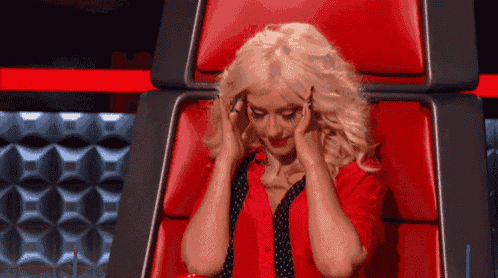
Maybe in the future I want to interview a sports psychologist about focus, but for now, I’ll stick to two basic tips, which have some overlap with the part where I discussed goalie tactics.
1. Active coaching
The first way to stay ‘awake’ in a game is to actively coach your teammates. If you coach actively, both in offense and defense, you automatically stay focused yourself. So this is a win-win situation: you help the team in coaching and you help the team by stopping more shots.
2. Being and staying in motion (also standing up)
The second way to stay focused is to stay physically in motion. This is possible if the opponent has the ball in your half, but if your team is in possession of the ball in the other half, you can more easily ‘fall asleep’ again Get up! These are moments to give your knees some rest, get up and recover from your fantastic rescue from netting An additional advantage: when you stand up, you have more overview, so you can better meet point 1.
Another crucial part of the mental aspect of goalkeeping is dealing with setbacks. As a goalkeeper, you are alone in the middle of a team. If you get a goal against, your team will probably get back to the bench, but you have to stay on the pitch. Letting your head hang is a logical consequence in these kinds of cases.
In many teams, you will, therefore, see that the second goalie gives the first one some attention and positive energy with every goal conceded. This mental support can help you get your head back into the game
A concrete tip here is: consider what works for you and pass this on to your fellow players. For one goalkeeper, it will help if you speak to him in a ‘positive-aggressive way’, e.g.: “Hey, come on, you’re going to stop the next one!”, while for another goalkeeper, this can be intimidating. He might prefer to hear constructive things like “keep your hands high when they shoot”. If you know the perfect way to get your head into the game, pass this information on to your teammates so they can support you in this.
2.2 Goalie tactics
This point can be divided into two parts: 1. the ‘personal’ tactics and 2. the way you contribute to the team tactics.
1. Tactics for yourself as a goalie
Johan and Tiltu have already said a part about this. Are you a proactive and aggressive goalkeeper, or more reactive and wait-and-see? By aggressive I don’t mean anything negative, it’s mainly about the speed with which you come out and dive on the ball.
The choices you make in this regard have to do with a number of factors, such as how fast you are, how big you are and how daring you are
- Speed: if you can move quickly back and forth, and backwards and forwards, it is worth sitting further away from your goal. This has already been discussed in article 1.
- Size: the bigger you are, the easier it is to stop shots. We asked Finnish center Joonas Pylsy about goalie Eero Kosonen: ‘Scoring with him is difficult because he is just so big’. In a later article, we talk more about what Joonas has to say about sniping goals. So if you’re tall, you have an advantage when it comes to size, but maybe you’re a bit slower than a shorter goalie.
- Dare: Do you have the guts to throw yourself in front of a shot and throw yourself on top of a ball? The more daring you are, the more often you will do so, although that doesn’t mean that the more guts you have, the better you will defend the goal.

These factors therefore partly determine how you can fill in your personal tactics. Of course, there are other things that play a role, such as how often you stand up as a goalkeeper or how hard you can and want to shout.
Consider for yourself how you want to see yourself as a goalkeeper when it comes to tactics. The more you are aware of your own qualities, the better you can use them during a game or training session Make sure you don’t necessarily have to have one tactic. Johan also said it in the above chapter: sometimes he dives aggressively on a ball (active), but sometimes he waits patiently (reactive).
2. What to do during a game?
Of course, you can focus not only on your own tactics but also on those of the team. This can be done by being aware of the tactics and then directing the fielders accordingly.
It is easiest to coach the defenders, as they are closest. So make sure you know how your team positions itself in defense as well as in offense. Where should the players without the ball give support, and from where do you expect the defence to put pressure on the opponent?
The goalkeeper is the player with the most overview. He can oversee the pitch and sometimes has time to analyze the opponent’s tactics (unless the opponent is much better and the goalkeeper is working non-stop to save). For this reason, you should also delve into tactics, firstly those of your own team, but also those of your opponents.
Finally, what is very important is that you dare to shout loudly You have a goalie mask on, so your voice will be muffled and on top of that, your fellow players are high in adrenaline during the game, so you will have to shout extra loud if they want to steer and coach you. So do this too!
2.3 Off-court practice
Part 1 has already explained how you can train certain things as a goalkeeper. Here are some more things you asked for.
Core
As a goalkeeper, you need strong abdominal and back muscles in order to be able to sit up straight as quickly as possible. So train your core for this. It is best to search for exercises on YouTube. A video that I find very instructive, because with every exercise tips are given, is this one:
Other standard exercises are planks and situps. Whatever exercise you do, don’t forget to train your back (e.g. with the Superman):

Endurance
What kind of stamina does a field player need? He needs to be good in interval training because that’s what a game looks like. For goalkeepers this is similar, they too sometimes have to work hard for a minute, and then have another minute of ‘rest’.
An hour-long running session is fine for your endurance, but is not perfectly suited to your floorball eundurance. It is better to do an interval run, where you run one minute at 80% of your limit and then two minutes at 60%. Do this ten times and you have trained for half an hour on your interval endurance. Of course you can also run at 90% or even 100% (even if one minute is long) and you can also shorten or prolong the recovery period. Adjust this to your own wishes.
Another very good way to improve your condition is high intensity interval training or HIIT. Here are also many examples on YouTube. One of Anne-Jan’s favorites is the next one, where you don’t need any attributes (but you do need a towel because it makes you sweat):
Hand eye coordination
This is an absolute must for goalies. In the previous article I touched upon this briefly. Especially now (in either quarantine and/or pre-season) you can practice well in this area. You need at least one ball, but more is better. You can now start practicing catching the ball. The great thing about this is that you can scale it to your own level.
Have you just started being a goalkeeper? Then simply throw the ball up and catch it. If this goes well, try it with one hand (and then the other hand as well). You can do this with two balls at a time, one for each hand.
Even more basic, you can also bounce the ball on the ground or against the wall and then try to catch it again.
This can also be done with two balls at the same time. Is this also going well? Then try a few simple ways of juggling, first with two balls, then three, and then all kinds of variants:
Tactics
This has already been discussed in the previous paper on tactics. Make sure you are familiar with game tactics, such as how a 2-1-2 defense works.
Questions?
Hopefully, thanks to this article, you’ve discovered a number of ways to improve yourself as a goalkeeper. Even if the training sessions in many countries don’t go ahead, you can get to work, whether it’s with workouts, juggling or reading about tactics.
Do you have any additional questions? Please let us know. Also if you have any questions for Johan, Tiltu or Joonas, please let us know. I would also like to thank Johan, Tiltu and Joonas for their cooperation with this article!



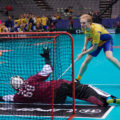
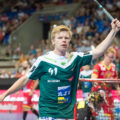
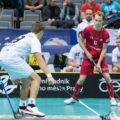
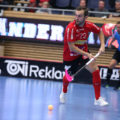
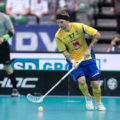
No Comments
Leave a comment Cancel